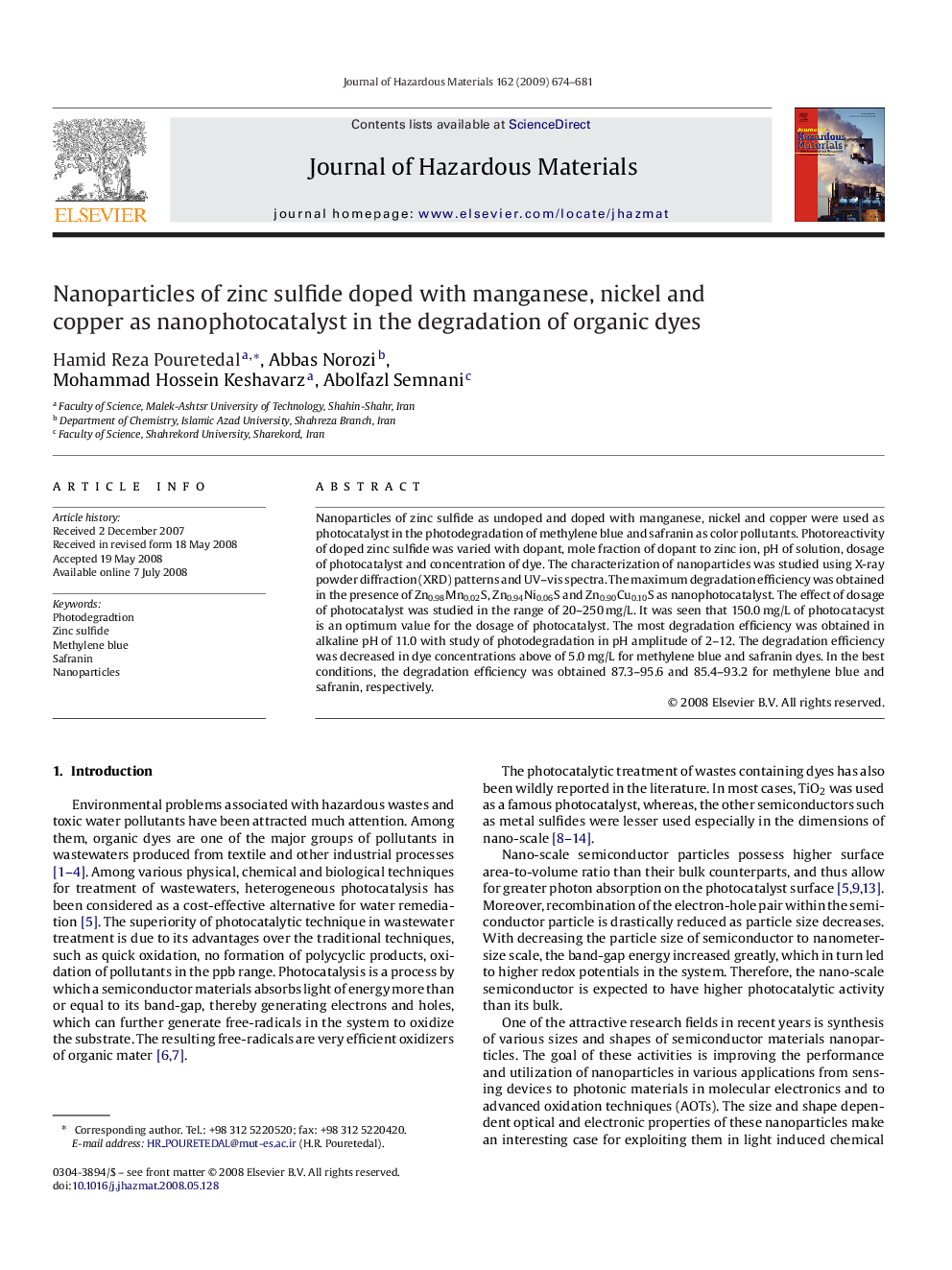| Article ID | Journal | Published Year | Pages | File Type |
|---|---|---|---|---|
| 582347 | Journal of Hazardous Materials | 2009 | 8 Pages |
Abstract
Nanoparticles of zinc sulfide as undoped and doped with manganese, nickel and copper were used as photocatalyst in the photodegradation of methylene blue and safranin as color pollutants. Photoreactivity of doped zinc sulfide was varied with dopant, mole fraction of dopant to zinc ion, pH of solution, dosage of photocatalyst and concentration of dye. The characterization of nanoparticles was studied using X-ray powder diffraction (XRD) patterns and UV-vis spectra. The maximum degradation efficiency was obtained in the presence of Zn0.98Mn0.02S, Zn0.94Ni0.06S and Zn0.90Cu0.10S as nanophotocatalyst. The effect of dosage of photocatalyst was studied in the range of 20-250Â mg/L. It was seen that 150.0Â mg/L of photocatacyst is an optimum value for the dosage of photocatalyst. The most degradation efficiency was obtained in alkaline pH of 11.0 with study of photodegradation in pH amplitude of 2-12. The degradation efficiency was decreased in dye concentrations above of 5.0Â mg/L for methylene blue and safranin dyes. In the best conditions, the degradation efficiency was obtained 87.3-95.6 and 85.4-93.2 for methylene blue and safranin, respectively.
Related Topics
Physical Sciences and Engineering
Chemical Engineering
Chemical Health and Safety
Authors
Hamid Reza Pouretedal, Abbas Norozi, Mohammad Hossein Keshavarz, Abolfazl Semnani,
